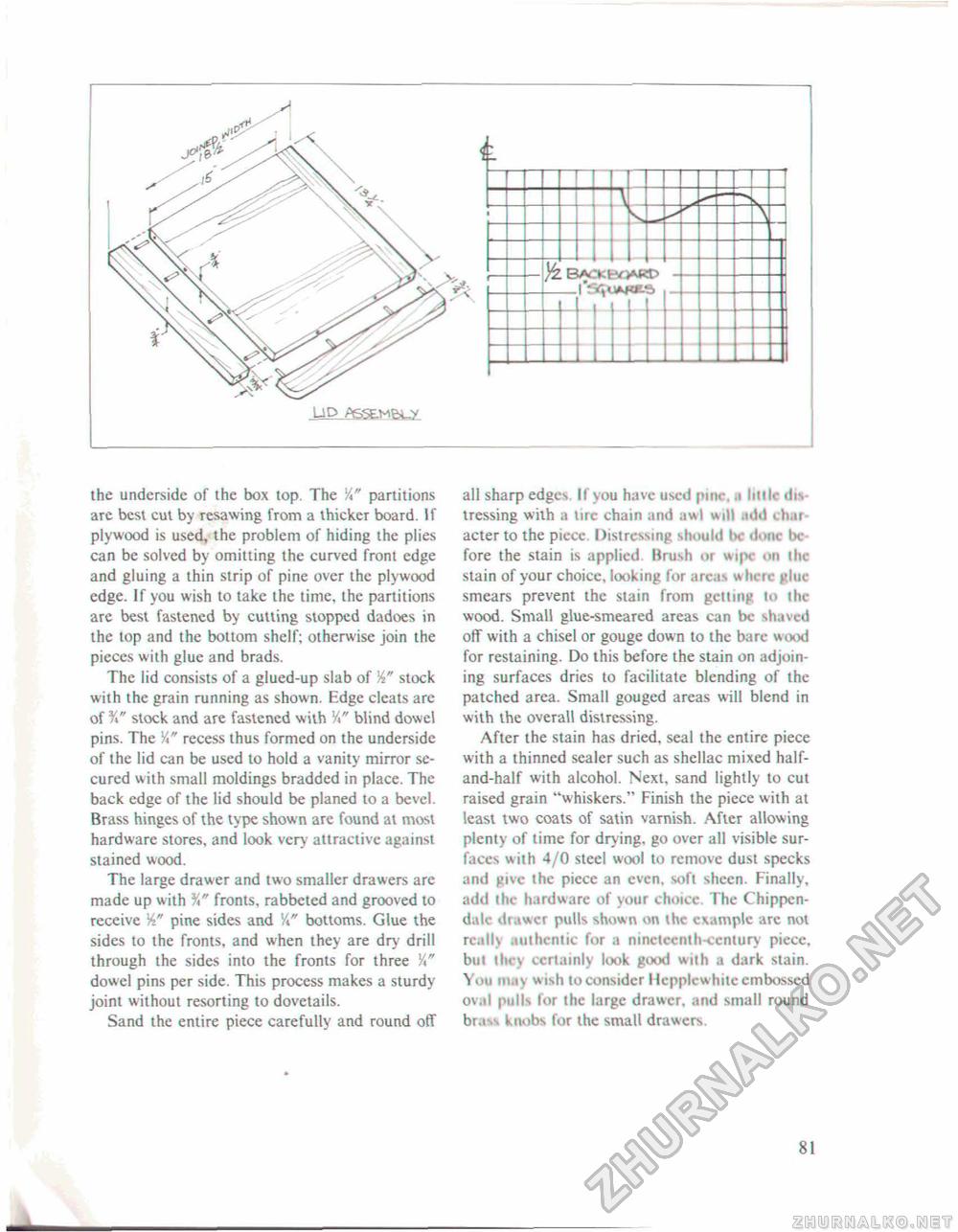Woodworker's Journal 101-Projects-for-Woodworkers, страница 88
UP A5SE.H&L-V the underside of the box top. The Y*" partitions are best cut by resawing from a thicker board. If plywood is used, the problem of hiding the plies can be solved by omitting the curved front edge and gluing a thin strip of pine over the plywood edge. If you wish to take the time, the partitions are best fastened by cutting stopped dadoes in the top and the bottom shelf; otherwise join the pieces with glue and brads. The lid consists of a giued-up stab of 14" stock with the grain running as shown. Edge cleats arc of stock and are fastened with V" blind dowel pins. The recess thus formed on the underside of the lid can be used to hold a vanity mirror secured with small moldings bradded in place. The back edge of the lid should be planed to a bevel. Brass hinges of the type show n arc found at most hardware stores, and look very attractive against stained wood. The large drawer and two smaller drawers are made up with %" fronts, rabbeted and grooved to receive W pine sides and 'A" bottoms. Glue the sides to the fronts, and when they are dry drill through the sides into the fronts for three dowel pins per side. This process makes a sturdy joint without resorting to dovetails. Sand the entire piece carefully and round off all sharp edges If you have used pine,,» htllc dis tressing with a tire chain and awl will i<td char acterto the piece. Distressing should be d"m be fore the stain is applied Brush or wipi on the stain of your choice, looking for areas where yhtt smears prevent the stain from getting to tin-wood. Small glue-smeared areas can be shaved off with a chisel or gouge down to the bare wood for restaining. Do this before the stain on adjoining surfaces dries to facilitate blending of the patched area. Small gouged areas will blend in with the overall distressing. After the stain has dried, seal the entire piece with a thinned sealer such as shellac mixed half-and-half with alcohol. Next, sand lightly to cut raised grain "whiskers." Finish the piece with at least two coats of satin varnish. After allowing plenty of time for drying, go over all visible surfaces with 4/0 steel wool to remove dust specks and give the piece an even, soft sheen. Finally, add the hardware of your choice. The Chippendale drawer pulls shown on the example are not rcall> authentic for a nineteenth-century piece, but they certainly look good with a dark slain. You may wish toconsidcr Hepplcw bile embossed ov.tl pulls lor the large drawer, and small round brass knobs for the small drawers. 81 - |








